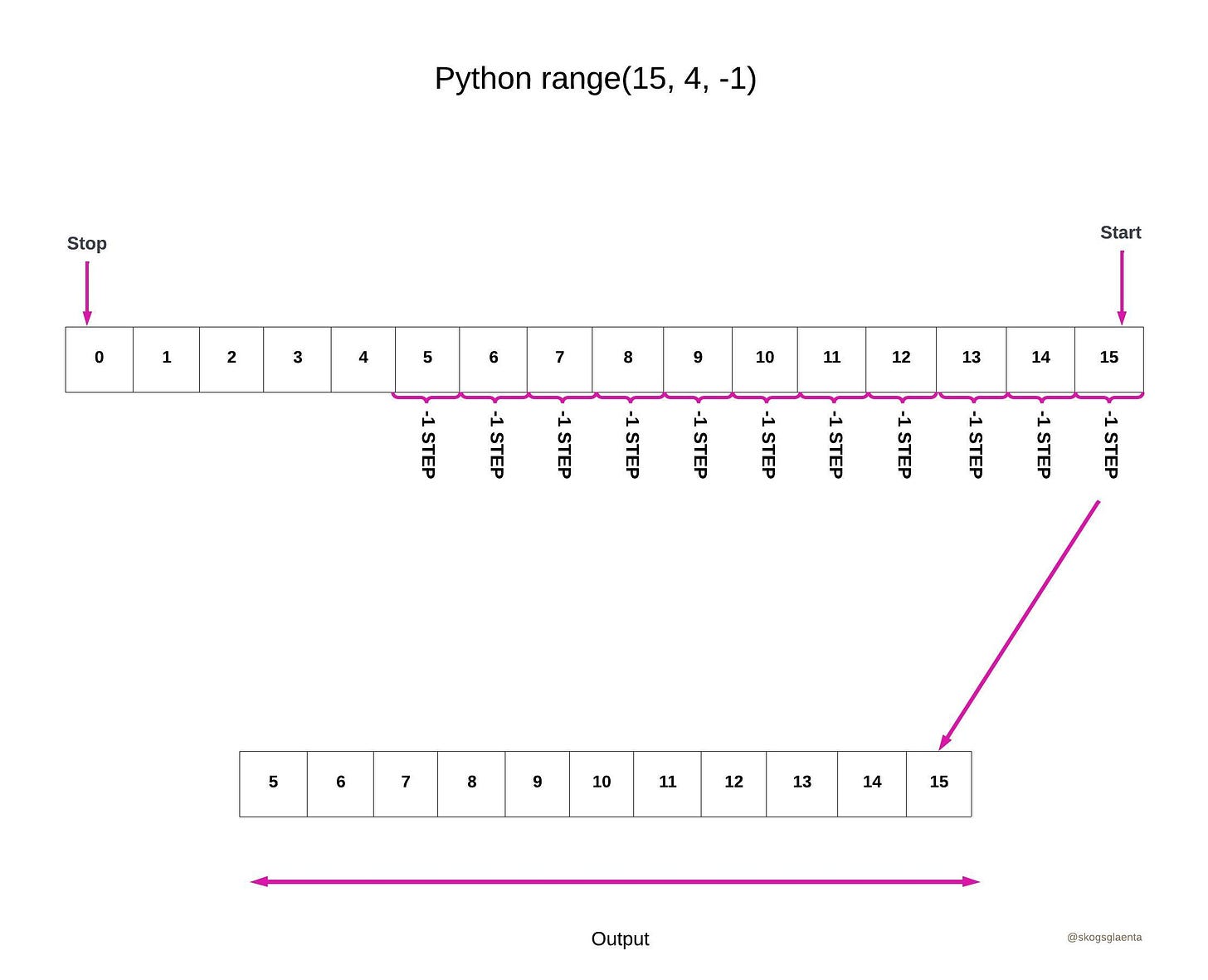Unlocking the Power of Python
[PART 2] Understanding functions and range 🤓
This post is part two of Unlocking the Power of Python, covering functions to explore the idea of and how to use the range function. So, let’s continue on this thrilling journey and Unlock the Power of Python.
What is a function and how do you use functions
In Python, a function is a block of reusable code that performs a specific task. Functions allow you to organize code into logical units, promote code reuse, and improve the readability and maintainability of your code.
Here is the syntax for defining and using a function:
def greet():
print("Hello, world!")
# Call the function
greet()
A function is defined using the `def` keyword followed by the function name, parenthesis and a colon. The body of the function, where the code is written, is indented under the function definition.
In the example above, the `greet` function is defined without any parameters. It simply prints the greeting message when called. The function is called using its name followed by parenthesis, triggering the execution of the code within the function.
Functions can also accept parameters, allowing you to pass values into the function for processing. Here’s an example:
def greet(name):
print("Hello, ",name)
# Call the function with an argument
greet("John")
In the above example, the `greet` function accepts a single parameter called `name`. When called with an argument, the value of the argument is passed to the `name` parameter inside the function, and the function prints the greeting message with the provided name.
Functions can also return values using the `return` statement. The `return` statement allows a function to compute a result and send it back to the caller.
Here’s an example:
def add_numbers(a, b):
return a + b
# Call the function and store the result
result = add_numbers(5, 2)
print("Sum: ", result)
In this example, the `add_numbers` function takes two parameters, `a` and `b` , and returns their sum using the `return` statement. The function is called with the arguments `5` and `2` , and the returned value is stored in the `result` variable and printed.
Note ✍🏾: Functions can have multiple parameters, perform complex computations, include control structures
`if`and`for`loops, and even call other functions. They provide a powerful mechanism for organizing and structuring code in Python.
What does a function return if it does not use a `return` statement
In the context of Python, id a function does not use a `return` statement. it implicitly returns `None` . `None` is a special object in Python that represents the absence of a value.
Here’s an example of a function without a `return` statement:
def say_heya():
print("Heya, world!")
result = say_heya()
print(result)
# Output: None
The `say_heya` function prints the greeting message but does not have a `return` statement. When the function is called, it executes the code within the function but does not explicitly return any value. As a result, the value assigned to `result` is `None` .
Note ✍🏾: Even though a function may not have a
`return`statement, it can still have side effects, such as modifying global variables or printing output. The absence of a`return`statement only means that the function does not explicitly produce a return value.
How to use `range`
The `range` function in Python generates a sequence of numbers within a specified range. It is commonly used for iterating over a sequence of numbers or controlling the number of loop iterations. The range function can be called with one, two or three arguments, representing the start, stop and step values of the range, respectively.
Here are 3 examples that illustrate the usage of `range` :
# Generate a sequecnce from 0 to 7
for number in range(8):
print(number)
# Generate a sequence from 2 to 8 (exclusive) with step of 2
for number in range(3, 9, 3):
print(number)
# Generate a sequence in reverse from 15 to 5 with step of -1
for number in range(15, 4, -1):
print(number)
In the 1st example, `range(8)` generates a sequence of numbers from 0 to 7. The loop iterates over this sequence, printing each number.
In the 2nd example, `range(3, 9, 3)` generates a sequence of numbers from 3 to 8 (inclusive) with a step of 3. The loop iterates over this sequence, printing each number.
In the 3rd example, `range(15, 4, -1)` generates a sequence of numbers in reverse from 15 to 5 (inclusive) with a step of -1. The loop iterates over this sequence, printing each number in reverse order.

The image above is an illustration of the range function.
The `range` function is versatile and can be combined with loops and other Python constructs to control iteration and generate sequences of numbers efficiently.
Conclusion
To summarise, functions are essential to organizing and reusing code in Python while enhancing readability and reusability. In addition to allowing you to create reusable blocks of code, they also provide the ability for parameters and returns to be passed. Additionally, the `range` function can be used to efficiently generate sequences of numbers.
Thank you for reading. Happy coding!

